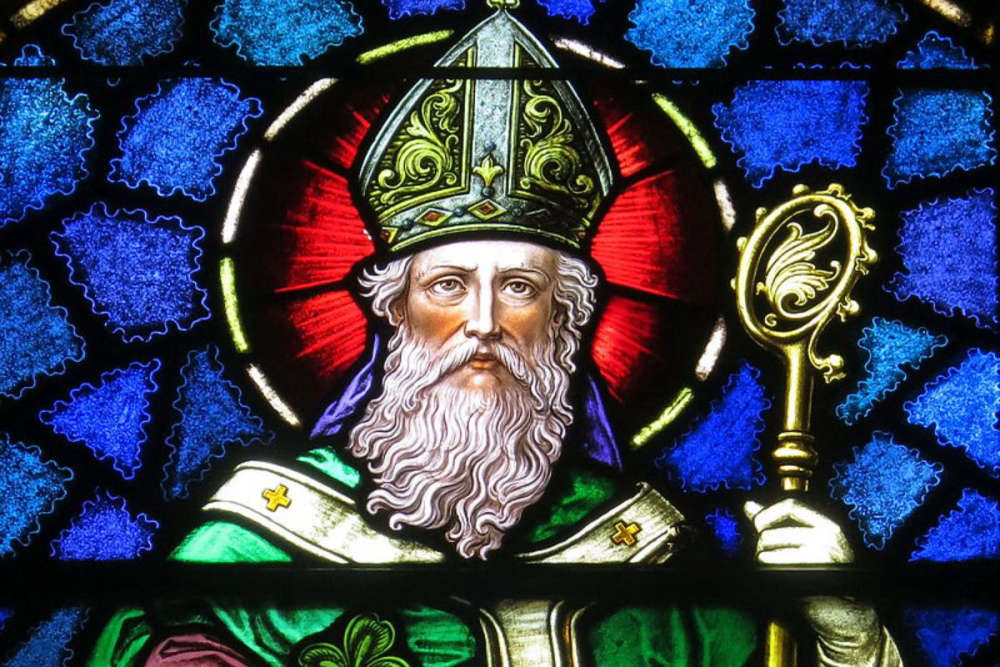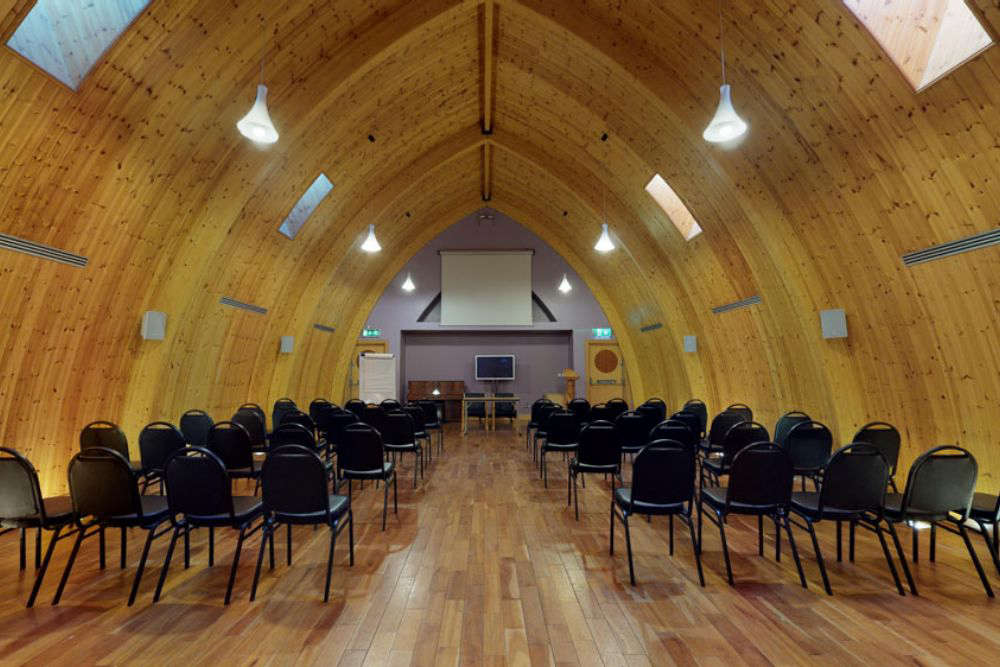
An article by James A. Corroon.
How Christianity was accepted and approved by the Romans and conveyed to Britannia by Constantine the Great, whose mother was Greek. Her Christian name was Helena; she was later canonized as a saint. She is traditionally attributed with the conversion of her son Constantine, who came to Britannia in 305 AD, with his father, to fight natives and Scots. His father died after a year in 306 AD. Constantine was made emperor stationed at Eboracum, now known as York, Britannia.
St. Patrick was born in 385 AD. Thus Christianity was now in Britannia for 79 years. His father and grandfather were clergymen. At that time there were missionaries entering Britannia from Gaul – France.
St. Patrick Converts Hibernian Citizens:
We have long celebrated the feast of Saint Patrick who died on March 17 in 461 AD aged 76 years, approximately, and is interred in Saul, Downpatrick. His real name was Maewyn Succat. He was born in 385 AD in Roman Britannia. The Romans had invaded Britannia in 43 AD
and did not depart until 410 AD.
Maewyn’s grandfather was a priest and his father a deacon. Pirates captured him when he was 16 years of age (401 AD) and sold him as a
slave shepherd to a North Hibernian farmer. After 6 years, in 407 AD he escaped back to Britannia. He took the name Patrick when he became a priest and eventually a Bishop. He returned to Hibernia in 432 AD as a preacher who converted the druids using the 3-leafed shamrock as an example of the Trinity. The first St. Patrick's Day parade was in Boston in 1737, the second was in New York in 1776.
There were at least 5 Popes and 2 Anti-popes as head of the Roman Catholic Church during St. Patrick's lifetime.
Popes:
1. Innocent I, 404 – 412
2. Boniface I, 418 – 422.
3. Colestine I, 422 – 432.
4. Sixtus III, 432 – 440.
5. Leo I, 440 – 461.
Anti-Popes:
1. Zozimus, 417 – 418.
2. Eulalus, 418 – 419
(An Anti-Pope is a senior clergyman claiming the papacy, usually from Rome, Italy or Gaul, France.)
This week we will join with people around the world, Irish and non- Irish, to celebrate Saint Patrick and the inspiration for so many wonderful traditions on our island.
Julian Calendar Defines Easter For St Patrick:
The Julius Caesar Calendar, was introduced in 45 BCE and was in operation until the 16th century AD.
The main purpose of the Julian calendar was to ensure a more accurate calculation of the date of Easter, which is a significant Religious Holiday or Feast for the Roman Empire and Christians.
The Julian calendar was not perfect, however, i.e. it began to drift out of sync with the solar year. This was due to the fact that the length of a solar year, which was calculated as 365.25 days, but the Julian calendar only added an extra day every four years. This discrepancy meant that the calendar was eventually 11 minutes and 14 seconds ahead of the solar year.
When Pope Gregory XIII i.e. “a great astronomer” introduced his calendar, or measurement of time, in 1582, it was designed to correct drift that had occurred in the Julian Calendar. A number of changes were made, including the dropping of 10 days in October, i.e. to bring the calendar back in line with the solar year. The Gregorian calendar also introduced a new rule for leap years, where a year would only be a leap year if it was divisible by 4, but not if it was divisible by 100, unless it was also divisible by 400.
This rule reduced the number of leap years and helped to ensure that the calendar would stay in sync with the solar year. The adoption of the Gregorian calendar was not immediate In fact it was 1752 before the British Empire adopted it - all of 170 years.
In conclusion, the Julian calendar was a major step forward in the calculation of time and was the main calendar used in the Western world for over 1500 years. Despite its inaccuracies, the Julian calendar helped to ensure a more accurate calculation of the date of Easter. The Julian calendar is still used in some Eastern countries.
You can examine the similarities of both calendars for yourselves;
i.e. Pope Gregory XIII decided September, April, June and November
to have 30 days and 7 months with 31 days, leaving February with
28 days, but in the leap year, every 4 years, February would have 29
days.
How Easter is defined:
It is the 1st Sunday after the full moon that comes on, or after, the Spring Equinox.
If the Spring Equinox occurs when the sun crosses the Celestial equator going South to North on the 21st of March and September
22nd.
About James A. Corroon:
I was born on a farm in Banagher, Killucan, County Westmeath. I was the third of ten children - born in 1936. Three years later the Second
World War commenced - thus food rationing started. Being on an island, tropical fruits were not available. Germ warfare was used.
Scabies were introduced to Ireland by aircraft flying down the coast releasing germs. We now had a free state with no industry. Our main Currency earner was the export of livestock. I was average at college. I was a long- distance swimmer and diver, and thus I saved seven lives.
At 201/2 years, in 1956, I emigrated to Canada and worked in horticulture. Returning to London underground as a Trainee Controller I kept going to day college and night college. I won a scholarship to London University for 1 year. After 15 years in London I returned to Ireland and became a contractor and was in the property business, in a small way.
In London I met and married a beautiful nurse SRN, SCM, RGN., who got promotion over the years to Nurse Manager. We got married and
honeymooned in Europe, Scandinavia and Russia.
Over the years we travelled to 76 countries afforded by being non- drinkers, non-smokers and non-gamblers. Now in retirement we live in a self-designed and self-built house on 43 acres or 17.5 hectares, where I have planted an orchard and thousands of trees.
Since my wife, Marie Frances, had a stroke we've gone nowhere, as I care for her in her wheelchair 24/7. I used to write for newspapers on local
history, horticulture, Latin, genealogy and anthropology.
I write these articles from facts within my knowledge, save where otherwise appears, and when so otherwise appearing, I believe the
same should be true and accurate.


 Westmeath Band Announce Tour Dates
Westmeath Band Announce Tour Dates
 Midlands Weekend Festival Guide
Midlands Weekend Festival Guide
 Midlands Bombshell Enters Love Island Villa
Midlands Bombshell Enters Love Island Villa
 Music Industry Experts Criticise RTE'S Decision To Not Broadcast Electric Picnic
Music Industry Experts Criticise RTE'S Decision To Not Broadcast Electric Picnic
 FilmOffaly Offering Paid Placement For Aspiring Filmmakers
FilmOffaly Offering Paid Placement For Aspiring Filmmakers
 Kneecap To Play Electric Picnic
Kneecap To Play Electric Picnic
 Midlands Music Fans Warned About Online Ticket Scams
Midlands Music Fans Warned About Online Ticket Scams
 Midlands MEP Marching In Banned Budapest Pride Protest
Midlands MEP Marching In Banned Budapest Pride Protest
 Offaly Store Brings 30 New Jobs
Offaly Store Brings 30 New Jobs
 Laois Town Competes In 'Communities in Bloom'
Laois Town Competes In 'Communities in Bloom'
 American TV Star Visits Westmeath
American TV Star Visits Westmeath
 Laois Woman Celebrates 41st Birthday Battling Rare Genetic Disorder
Laois Woman Celebrates 41st Birthday Battling Rare Genetic Disorder
 Midlands Today Show Awarded At Justice Media Awards
Midlands Today Show Awarded At Justice Media Awards
 Offaly Telescope At Heart Of University Research Collaboration
Offaly Telescope At Heart Of University Research Collaboration
 Irish Rail Announces Extra Services For Gig-Goers
Irish Rail Announces Extra Services For Gig-Goers
 Electric Picnic Planning License Gets Green Light
Electric Picnic Planning License Gets Green Light
 Laois Walks Festival Returns this Summer
Laois Walks Festival Returns this Summer
 Report Reveals Local Radio Among Most Trusted News Sources
Report Reveals Local Radio Among Most Trusted News Sources
 Inclusion In Our Local Spaces - Laois Integration Event Taking Place Today
Inclusion In Our Local Spaces - Laois Integration Event Taking Place Today
 Sabrina Carpenter Album Cover 'Glamorising Objectification' - ODVSS
Sabrina Carpenter Album Cover 'Glamorising Objectification' - ODVSS